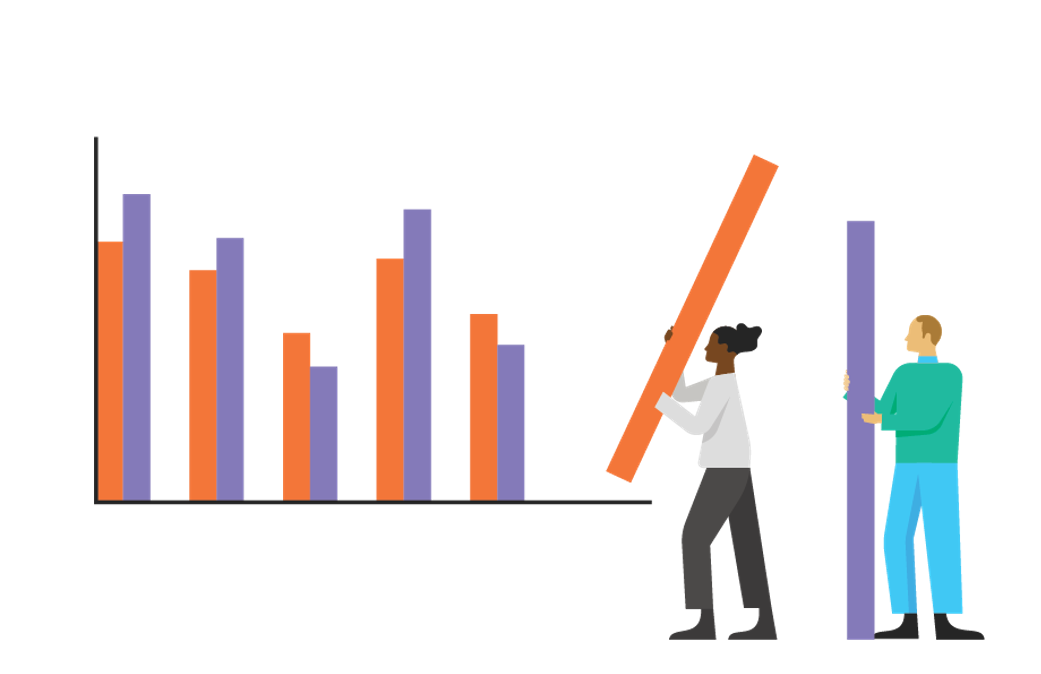The Art of Forecasting Contributed Revenue

Making Your Budget the Backbone of Your Nonprofit - Part 5
Without a crystal budgeting ball, how can I more precisely predict contributed revenue?
While expenses are relatively easy to forecast, revenue can be one of the more difficult parts of developing a budget. Forecasting unknown or uncertain contributed revenue can be tricky and can increase risk in your budget. One way you can manage this uncertainty is to predict the probability of your revenue.
Risk – the chance that something can go wrong.
To begin, you can grade your expected revenue, using the letters A, B, C, and D to distinguish different levels of risk for each revenue source (e.g. “A” for most dependable, “B” less so, and so on). Next, you assign each grant award a percentage that indicates the likelihood of receiving that grant in your next fiscal year. Consistency is key; use the same methodology or thinking each time you run through the exercise. There are a few methodologies; here are two ways that you can use this probability information:
- You can use a discount method where you multiply the expected grant award amount by the probability percentage, and then add up the discounted grant awards to arrive at a total. This methodology is effective if you have a lot of different revenue sources, and/or if you use the information in the aggregate. However, make sure you avoid any confusion by updating these amounts and percentages when grants do come in the door. For instance, if you receive a $10,000 grant that was predicted at 50%, make sure to update the $5,000 to $10,000 to avoid throwing off budget-to-actual comparisons.
- You can also use a cutoff methodology that takes the sum of the full amount of all the grant awards over a particular probability. In this case we use the entire amount of the grants that are expected to come in over a certain percentage probability, say 75%.
Using either of these probability methodologies will help to refine your forecast and give you greater confidence in your contributed revenue pipeline management. And you can use these probability methodologies to arrive at a range of contributed revenue you expect to receive for the upcoming fiscal year, which can be useful in setting expectations for you and your board.
As we explore best practices in budgeting, we’ll be using a case study to illustrate real-life numbers and scenarios: Hope Through Housing (HTH). A nonprofit dedicated to providing food, clothing, mentorship, and job opportunities to young people in Philadelphia, HTH was founded on the belief that everyone deserves an equitable chance in life. Jordan Johnson, Founder and Executive Director of HTH, continues to explore new ways for HTH to better support youth in actualizing their dreams. Let’s use HTH’s 2018 foundation grants to illustrate this concept.
In her budget, Jordan Johnson included HTH’s list of funders and a total of $535,000 for foundation revenue (This is the amount after she made the adjustment for the Sunshine Foundation two-year grant, mentioned in Part IV of this series, because of the nature of the grant’s restrictions.).

After our conversation, she explored the methodologies mentioned above to compare and determine which to use for this budget cycle. Jordan started by coming up with a probability ranking for each letter grade, and then assigned a letter ranking and probability to each grant.

Discount Method
In the column labeled “Budget Discounted Revenue” (in the graphic below) she multiplied the amount of each grant by the corresponding probability of receiving it, and then totaled the column. For instance, for the Fairhills Foundation grant she multiplied $15,000 by the 75% probability to arrive at $11,250.

Cutoff Method
Likewise, in the column labeled “Budget Only 75% or Higher Ranking” (in the graphic below) she identified all grants that had a probability of 75% or greater and summed the whole (non-discounted) amounts to arrive at a total. She did not include any grants with a 50% probability or less.

You can see that the totals ($450,000 and $490,000) are less, and more realistic, than the $535,000 total that she started with. She can now choose which methodology to use and the amounts she will include in her overall budget. I encouraged Jordon to calculate each as she is just starting out on this journey, and then over the years she can see which method tends to be the most accurate for HTH.
All this talk of grant revenue and probability got Jordan thinking: What if I get significantly bad news from one of my funders? Can I change my budget in the middle of the year?
To use a budget effectively, it needs to be a static document - and a tool that is used to compare actual results - in order to ensure that the actual results are in line with your board-approved budget. Only in very rare instances would the board need to reapprove an amended budget (e.g., if the fiscal year is likely to end very differently than the predicted original budget).
So, if I shouldn’t change my budget, and I have just received upsetting news from a large funder, what should I do?
Next up: The Art of Reforecasting
Making Your Budget the Backbone of Your Nonprofit
To learn more about forecasting, check out Financial Planning Part 1 from NFF's Nonprofit Financial Management Webinars.
Join over 24,000 social sector leaders who receive our latest insights and noteworthy stories throughout the year.
